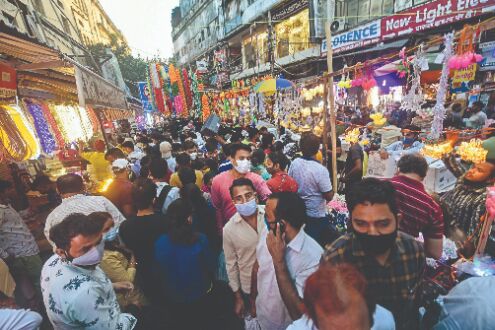Dengue: Delhi govt preps, Centre steps in

New Delhi: As the Delhi government starts opening up Covid hospital beds for rising dengue, malaria and chikungunya patients in the city, Health Minister Satyendar Jain has insisted that the dengue situation here is under control but the Centre has now decided to intervene — with Union Health Minister Mansukh Mandaviya setting up a review meeting with the Delhi government on how to manage the situation better.
Significantly, an official source has said, "Dengue has witnessed a surge in dengue cases and Health Minister Mansukh Mandaviya will review the situation with the Delhi government and also provide assistance in curbing the rise in cases."
Officials from the National Centre for Disease Control and National Vector Borne Disease Control Programme will also be present in the meeting.
Delhi has reported over 1,000 cases of dengue this year, with more than 280 cases logged in the last week, according to a civic report released on Monday last week. The latest figures are set to be announced today. Of the total number of dengue cases this season, 665 were recorded in the first 23 days of this month alone with the first dengue death season coming on October 18.
Announcing that his government had decided to open one-third of Covid reserved beds for dengue patients, Health Minister Jain said on Sunday, "To fight dengue, the government is working ahead on every front, whether it is to spread awareness, to prevent dengue, or to increase the number of beds in hospitals for the treatment of patients, the Delhi government is fully prepared."
"The people of Delhi need not be afraid of dengue but can fight and defeat it," Jain added.
But even as the Delhi government allows hospitals to allot one-third of Covid reserved beds for vector-borne disease patients, the upcoming festive season coupled with the gradual unlocking of the Capital have prompted people to throng marketplaces with crowds swelling at these markets by the day — with scant regard for Coid-appropriate behaviour — alarming health experts.
And in light of the crowds increasing, an interesting point of statistic has emerged showing that Covid challans had, in fact, decreased. Officials have said that enforcement has only gone down as more and more of the city was reopened - noting that the sheer increase in the number of people thronging public places was making it difficult to effectively monitor whether Covid rules are being followed.
Authorities here were issuing around 2.11 lakh challans a month in July but since the Covvid numbers have stabilised, the challans have been reduced consistently every month with just 1.04 challans issued in October (till Oct 25). In July, Rs 36.21 crore in Covid fines was collected but in October (till Oct 25), this came down to s 20.51 crore. Markets across Delhi, such as Sadar Bazar, Chandni Chowk, Lajpat Nagar, Lal Quarter Krishna Nagar, Karol Bagh, Kamla Nagar, Rajouri Garden and Tilak Nagar, witnessed a huge rush over the last weekend before Diwali.
Sadar Bazar Market Association president Devraj Baweja said it was complete "chaos" as those who thronged the market to do last-minute shopping ahead of the festival hardly followed any COVID-19 protocol.
"Festivals generally attract a big crowd but the authorities should have made elaborate arrangements to ensure that people follow Covid-appropriate behaviour. No one was seen wearing a mask or observing social distancing," he said.
Baweja said in the name of arrangements, police have only put up barricades that can stop vehicles, not people. He claimed that the civil defence volunteers were nowhere to be seen. A similar situation prevailed at the Chandni Chowk market as well.
However, according to traders at the Lajpat Nagar and Karol Bagh markets, the shoppers were largely seen following the Covid guidelines.
Meanwhile, the Capital on Sunday reported a marginal increase in Covid cases — with 45 new cases detected in the last 24 hours as the daily positivity rate rose marginally to 0.08 per cent.



